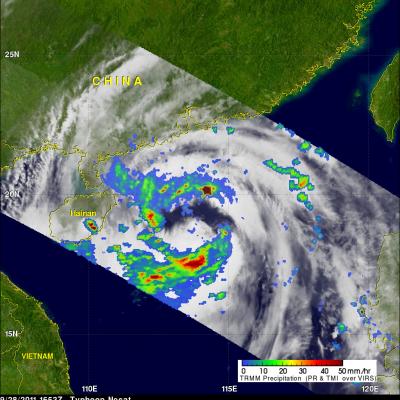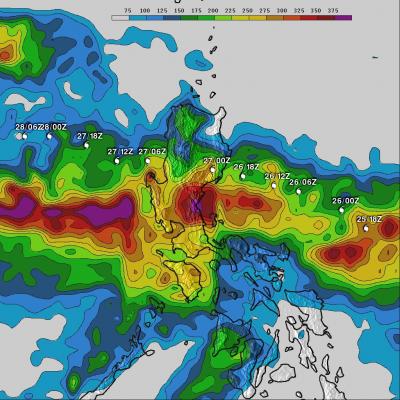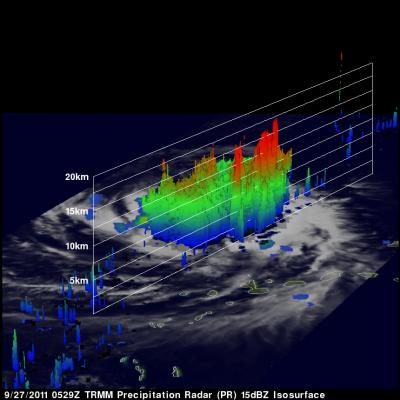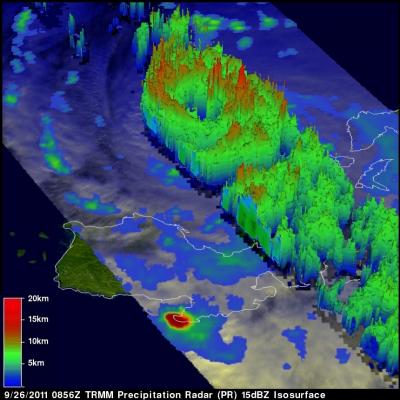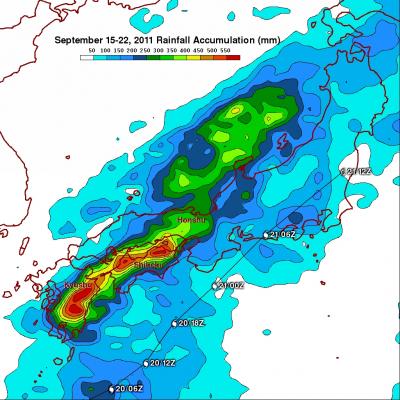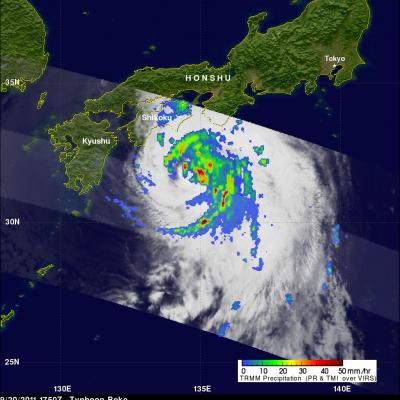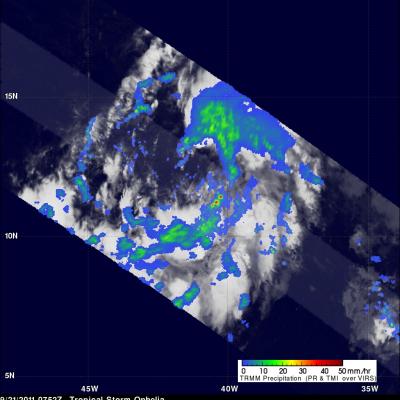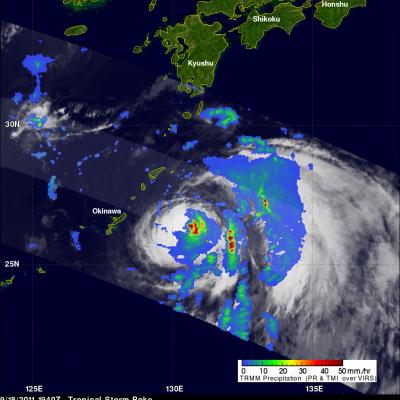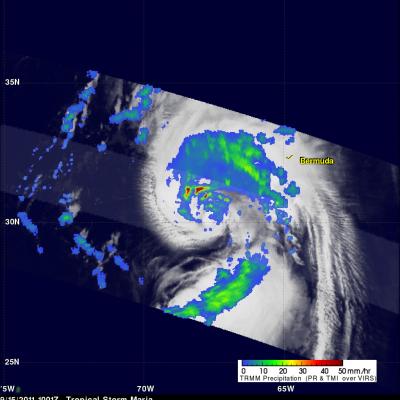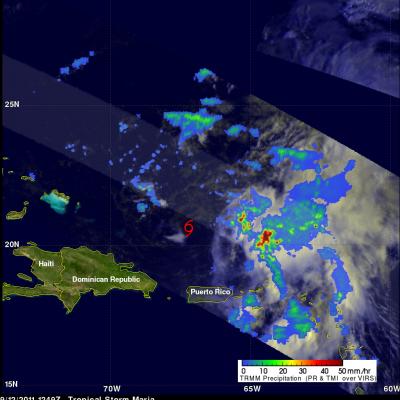TRMM Sees Nesat Approaching Southern Asia
The TRMM satellite passed directly over typhoon Nesat as it was approaching southern Asia on 28 September 2011 at 1653 UTC. The rainfall analyis on the right was derived from that TRMM pass and shows that Nesat had large bands of rainfall containing extremely intense thunderstorms. Nesat has battered Hong Kong and Hainan and is expected to drench northern Vietnam.


